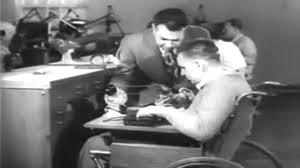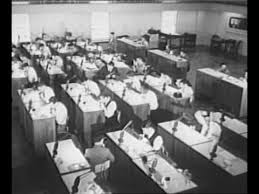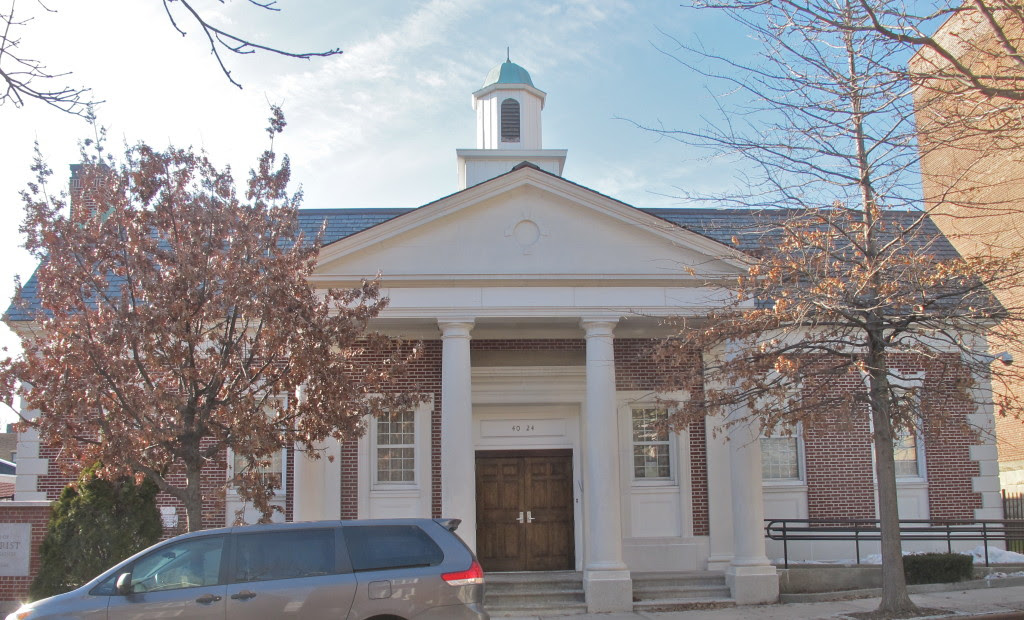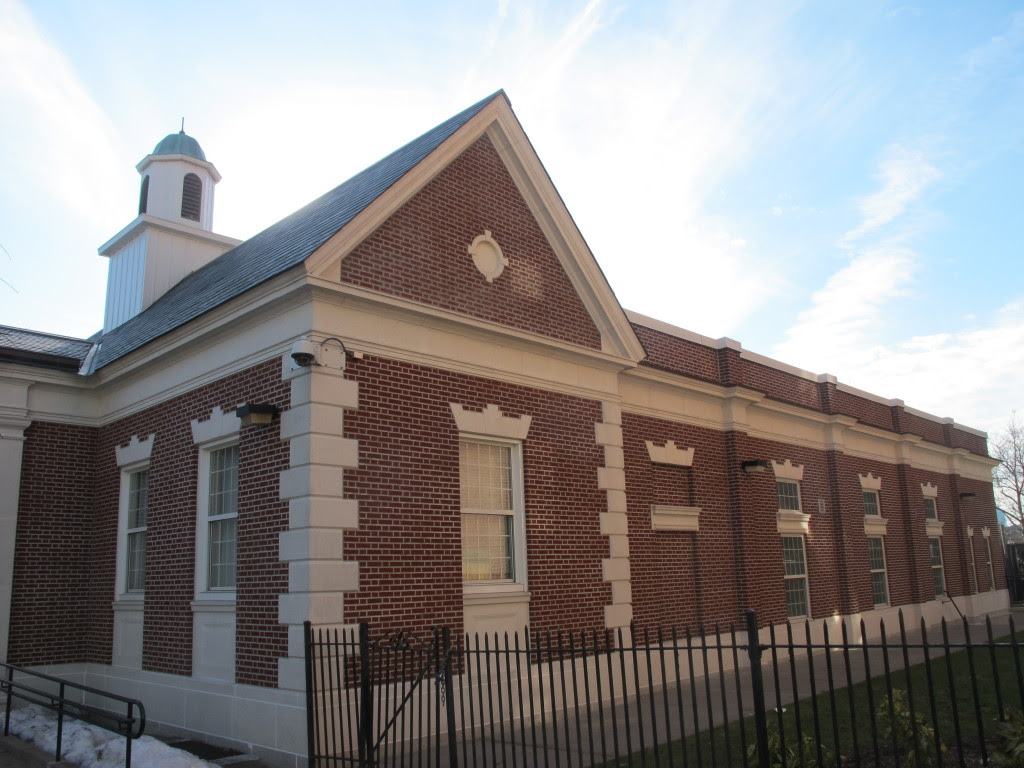Wednesday, December 9, 2020 – What is the history behind the building we pass on the Grand Central



WEDNESDAY, DECEMBER 9, 2020
OUR 231st ISSUE
OF
FROM OUR ARCHIVES
BULOVA CENTER

History
Bulova was founded and incorporated as the J. Bulova Company in 1875 by Bohemian immigrant Joseph Bulova. It was reincorporated under the name Bulova Watch Company in 1923, and became part of the Loews Corporation in 1979[and sold to Citizen at the end of 2007.
In 1912, Joseph Bulova launched his first plant dedicated entirely to the production of watches. Manufacturing watches at their factory in Biel (Switzerland), he began a standardized mass production new to watchmaking. In 1919, Bulova offered the first complete range of watches for women and men in 1924. The visual style of his first popular advertising made its watches popular with the American public. But beyond the original style, precision and technological research also became imperative for Bulova. In 1927, he set up an observatory on the roof of a skyscraper located at 580 5th Avenue to determine universal time precisely.
Bulova established its operations in Woodside, New York, and Flushing, New York, where it made innovations in watchmaking, and developed a number of watchmaking tools. Its horological innovations included the Accutron watch, which used a resonating tuning fork as a means of regulating the time-keeping function.

Bulova became a renowned watch company in 1923. Bulova produced the first advertisement broadcast on radio in 1926, announcing the first beep of history: ‘At the tone, it’s eight o’clock, Bulova Watch Time’, an announcement heard by millions of Americans. In 1927, Charles A. Lindbergh became the first solo pilot to cross the Atlantic nonstop. His crossing earned him a Bulova Watch and a check for $1000, and it became an emblem for the brand that created the model “Lone Eagle” in his likeness. Bulova claims to have been the first manufacturer to offer electric clocks beginning in 1931, but the Warren Telechron Company began selling electric clocks in 1912, 19 years prior to Bulova. In the 1930s and 1940s, the brand was a huge success with its rectangular plated watches whose case was strongly curved to better fit the curve of the wrist.

Women working in the pinion department of Bulova Watch circa 1937.
Bulova produced the world’s first television advertisement, on July 1, 1941 (the first day that commercial advertising was permitted on television), before a baseball game between the Brooklyn Dodgers and Philadelphia Phillies over New York station WNBT (now WNBC). The announcement, for which the company paid anywhere from $4.00 (equivalent to $70 in 2019)[citation needed] to $9.00 (equivalent to $156 in 2019),[citation needed] displayed a WNBT test card modified to look like a clock with the hands showing the time. The Bulova logo, with the phrase “Bulova Time”, was shown in the lower right-hand quadrant of the test pattern while the second hand swept around the dial for one minute.[6][7]
In the 1940s, Bulova made a few examples of their complex four sided, five-dial per side “sports timer” analog game clock[8] for use in NHL pro ice hockey games and for the nascent NBA pro basketball league of that time. They were put in indoor sports arenas such as Boston Garden, Chicago Stadium and the Detroit Olympia. The last example was taken out of service in Chicago in 1976, all replaced by digital-display game timepieces.[9]
In 1945, Arde Bulova, Chairman of the Board, founded the Joseph Bulova School of Watchmaking to provide training for disabled veterans after the Second World War. The school later became a full-fledged rehabilitation facility, an advocate for disabled people nationwide, and one of the founders of wheelchair sports in the United States. The school closed in 1993.
In 1967, Bulova bought the Manufacture des Montres Universal Perret Frères SA at Geneva and sold it in December 1977. The factory in Biel was closed in 1983.
Address: 40-24 62nd Street
Neighborhood: Woodside
Architect: Perry, Shaw and Hepburn with C. M. Lobejager and William F. Leppin Year: 1948
Current Status: Extant Award: Bronze Plaque for Public Buildings
Typology: Commercial Building
The J. Bulova Company was founded in 1875 in New York City as a maker of watches and clocks, becoming the largest watchmaker in the world. Subsequently, the Joseph Bulova School of Watchmaking was started in 1945 as a non-profit institution to provide training and rehabilitation for disabled World War II veterans, building a physical school just a few years later. The complex still exists on a narrow side street in Woodside. Design-wise the building uses elements of high style Georgian architecture and may have been an effort to associate the company to America’s past. The building incorporates an early use of a wheelchair ramp, which was an integral part of the design in order to allow disabled veterans to enter the building easily.
According to the history of Bulova, the school evolved into a full-fledged advocate for disabled people nationwide, and acted as one of the founders of wheelchair sports in America.
The school closed in 1993. Today the building houses the Church of Latter Day Saints.
Sources: Savitz, Harriett May. Wheelchair Champions: A History of Wheelchair Sports. iUniverse, 2006. Google books. 12 December 2014. books.google.com

Accutron Accutron Movement. The tuning fork prongs are around the two electromagnetic coils at the top of the watch, which drive it. Bulova’s “Accutron” watches, first sold in October 1960, use a 360 Hz tuning fork instead of a balance wheel as the timekeeping element.
The inventor, Max Hetzel, was born in Basel, Switzerland, and joined the Bulova Watch Company in 1948.[11] The tuning fork was powered by a one-transistor electronic oscillator circuit, so the Accutron qualifies as the second “electronic watch”, following the Hamilton Electric released in 1957. Instead of the ticking sound made by mechanical watches, the Accutron had a faint, high-pitched hum which came from the vibrating tuning fork. A forerunner of modern quartz watches which also keep time with a vibrating resonator, the Accutron was guaranteed to be accurate to one minute per month, or two seconds per day, considerably better than mechanical watches of the time. In 2020, Bulova relaunched the Accutron brand.
WEDNESDAY PHOTO OF THE DAY
Can you identify this site?
send you submission to
ROOSEVELTISLANDHISTORY@GMAIL.COM

TUESDAY’S PHOTO OF THE DAY
HALL OF BLACKWELL HOUSE
JOAN BROOKS, NINA LUBLIN, JOAN BROOKS, VICKI FEINMEL
WERE THE FIRST TO GET IT.
REMINDER: THE HOUSE IS OPEN TO THE PUBLIC
WEDNESDAY TO SUNDAY
11 A.M. TO 5 P.M.
WATCH FOR DATES OF TOURS OF THE HOUSE WITH JUDY BERDY


BACK IN STOCK!!
SHOP THE KIOSK WEEKENDS
Driving past the Bulova Building reminds me that buildings can be re-purposed and still be a lovely addition to the neighborhood. JudyB
Text by Judith Berdy
Thanks to Bobbie Slonevsky for her dedication to Blackwell’s Almanac and the RIHS
Thanks to Deborah Dorff for maintaining our website
Edited by Deborah Dorff
All image are copyrighted (c)
Roosevelt Island Historical Society
unless otherwise indicated
WIKIPEDIA
GOOGLE IMAGES
FUNDING PROVIDED BY ROOSEVELT ISLAND OPERATING CORPORATION PUBLIC PURPOSE GRANTS CITY COUNCIL REPRESENTATIVE BEN KALLOS DISCRETIONARY FUNDING THRU DYCD


Copyright © 2020 Roosevelt Island Historical Society, All rights reserved.
Our mailing address is:
rooseveltislandhistory@gmail.com





Leave a comment